Rosen Method Movement
When Marion Rosen was practicing as a physical therapist, her clients used to ask her if there was anything they could do to prevent injuries in the future. In response, Marion developed Rosen Method Movement, a sequence of stretches, joint mobilizations, and dance-like movements that are done to music.
Rosen Method Movement teachers are trained to notice where students are holding back as they move. Based on what she observes, the teacher introduces specific movements. Students find they are able to dissolve the barriers that keep them from moving freely. No two classes are ever the same.
The emphasis is on enjoying the movement of our bodies. When the body begins to move as a whole, we regain the freedom and joy of early childhood. By the end of a 60-minute class, students are inevitably laughing, and they leave feeling renewed and light-hearted.
I have attended classes with some of Marion’s original students from 30 years ago, women who are now in their 90’s. They are still lively and flexible. Rosen Method Movement is designed to help people age gracefully and retain the joy of living.
I am a Rosen Method Movement teacher and have taught at a number of locations, but am not currently offering ongoing classes. I try to do my own version of a mini-class, just for myself, for half an hour every day. It’s wonderful for keeping the joints lubricated and, thanks to the music, the spirit lifted.
[back to top]
|
|
The Rosen Method of Movement
by Sue Brenner and Marion Rosen
Rosen Method Movement is normally done with other students, led by a teacher. This book contains a description of the most basic movements and, since they are so simple, you could easily learn the movements from the text. The book also gives a history of Rosen Method Movement, discusses some of the physiological basis for the effectiveness of the work, and recommends music. See below for a video you can use at home.
[back to top]
|
|
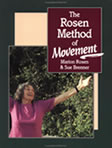 |
|
|
|
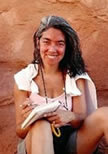 |
|
Rosen Method Movement Class in the South Bay
Theresa Garcia is a wonderful Rosen Method Movement teacher who comes to Palo Alto once a week (from San Francisco) to teach a class. Classes currently are on Thursdays from 12:15 p.m. to 1:15 p.m. at Integrated Healing Arts, but check Theresa’s website for the latest information, including costs. There is usually a reduced rate for a series of classes. You can contact Theresa by phone (415-812-9917) or email her at TTYGarcia@aol.com.
[back to top]
|
|
|
|
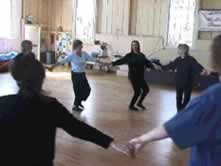 |
|
Rosen Method Movement Video
Jane Malek is a senior Rosen Method Movement teacher who has created a videotape of a movement class, allowing you to practice in your home. It’s also available on DVD. You can read more about it and order it from her website.
[back to top]
|
|
|
|
Essential Motion
Karen Roeper is a Rosen Method practitioner and senior teacher. She has combined her work as a dance therapist with a deep understanding of the mind/body connection to create two movement practices that are powerful and transformative: Essential Motion and Eyes of the Beholder. You can read about them on her website.
[back to top]
|
|
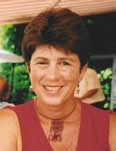 |
|
Essential Motion and Eyes of the Beholder
Karen Roeper is an extremely perceptive observer of the body in motion, and she has an uncanny knack for identifying what needs to be expressed. Her approach is very gentle and totally supportive. I have personally experienced dramatic shifts as a result of this work and recommend Karen highly.
[back to top]
|
|
|
|
Continuum Movement Meditation Classes
Continuum Movement is based on the premise that our bodies consist primarily of water. Classes combine breath, sound, and imagery, leading to an experience of movement on the cellular level. Lucia Mirachhi (the Director of the Body Therapy Center) is an inspiring Continuum Movement teacher. She offers classes Wednesday evenings at her studio in Palo Alto. She asks students to donate $15 to breast cancer research in exchange for the classes. The phone number for more information is 650-329-0130.
[back to top]
|
|
5Rhythms
Whether you consider it movement therapy, aerobic exercise, or a spiritual practice, a 5RyhthmsT dance class is a great experience. The practice comes from the work of Gabrielle Roth, known for her Gabrielle and the Mirrors CDs (see below).
Classes consist of moving to spiritually inspired trance-dance music. There is theory behind the work — the sequence of the rhythms and what happens to you as you move through each rhythm — but you don’t need to know anything to benefit and enjoy. |
|
 |
|
Ecstatic Productions
There’s a weekly 5Ryhthms dance class in Mountain View taught by one of Gabrielle’s students, Lori Smullin. It meets on Monday nights, from 7:30 to 10:00, at the Flex-It Gym (425 West Evelyn). There’s a Sweat Your Prayers dance session on the first Sunday of the month from 11:00 to 1:00 at the same location. Lori also teaches in Santa Cruz on Wednesday evenings. For more information, you can contact her by email or visit her website, Ecstatic Productions.
[back to top]
|
|
|
|
 |
|
Raven Recording
For more on Gabrielle Roth, her recordings, and her teaching centers, visit the Raven Recording website.
[back to top]
|
|
|
|
Sweat Your Prayers: Movement as Spiritual Practice
by Gabrielle Roth
I discovered Gabrielle Roth’s work when I was attracted to this subtitle — movement as spiritual practice. When she was promoting this book, I met her one evening at East West books in Mountain View. She had everyone push the chairs out of the way, she put on some music, and everybody danced. It was wonderful! The book is largely her spiritual autobiography, but also explains how dance can be a path to the true self.
[back to top]
|
|
 |
|
|
|
 |
|
Gabrielle Roth 5Rhythms
You can do 5Rhythms dance in the privacy of your own home. Below are some of the CDs from Gabrielle Roth’s record company that I enjoy and recommend. The first five are good for dance. The last three are good for meditative listening. You can hear MP3 clips from many of these albums by clicking on individual albums here.
[back to top]
|
|
|
|
Trance
by Gabrielle Roth and the Mirrors
Lots of drumming. Almost all of the eight tracks have didgeridoo. There are a variety of rhythms on this album. From the cover art: “Trance/dance music that calls the soul into the body, the body into the beat and the beat into the belly.”
[back to top]
|
|
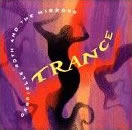 |
|
|
|
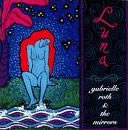 |
|
Luna
by Gabrielle Roth and the Mirrors
Very rhythmic, but a bit calmer and more mellow than some of the other albums. More synthesizer, less didgeridoo. From the cover art: “The music of LUNA weaves a sensuous web of mystery and delight that echoes deep into our ancestral bones and celebrates the dawn and dusk of our humanity.”
[back to top]
|
|
|
|
Totem
by Gabrielle Roth and the Mirrors
Very trance-like, but it’s a low-keyed trance, not an exhausting one. From the cover art: “Ancient and modern worlds unite in this urban-primitive, trance-dance music for dancing and listening.”
[back to top]
|
|
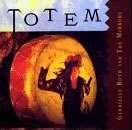 |
|
|
|
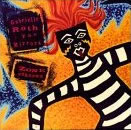 |
|
Zone Unknown
by Gabrielle Roth and the Mirrors
A mixture of rhythms with an urban flavor. Title tracks include Tracts, Zone Unknown, Downtown, Buffalo Dream, Avenue A, Jamu, Tribe, and Drifting.
[back to top]
|
|
|
|
Initiation
by Gabrielle Roth and the Mirrors
This is a good album to start with. You can choose to do just the five rhythms (flowing, staccato, chaos, lyrical, stillness) as a daily practice. This is followed by a track called Body Jazz that warms up each of the body parts (head to feet). The final track (Initiation) puts it all together and features haunting, evocative vocals.
[back to top]
|
|
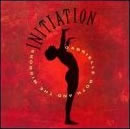 |
|
|
|
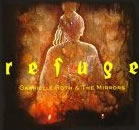 |
|
Refuge
by Gabrielle Roth and the Mirrors
Features Boris Grebenshikov, who is sometimes referred to as the Russian Bob Dylan, at other times as the Russian John Lennon. He has a deep, resonant voice that’s especially effective in chant-like passages. I especially like the title cut, but the whole album is good. Instruments include taos drums, alto flute, viola, talking drum, trumpet, cello, congas, keyboards, rainsticks and more. All royalties donated to Tibetan Buddhist causes.
[back to top]
|
|
|
|
Sura
by Chloe Goodchild
Spiritually inspiring and a pleasure to listen to. Among my favorites: Om Shiva!, Self Inside Self (I once spontaneously broke into this song while moving across the dance floor at a Karen Roeper workshop), Everywhere Longing, Remember Me.
[back to top]
|
|
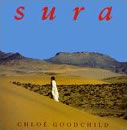 |
|
|
|
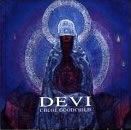 |
|
Devi
by Chloe Goodchild
Her first album. Also excellent. Titles include Devi, Kyrie, Thy Will/Jaya Bhagavan, Ave Maria, Taron, Gone Gone Far Beyond.
[back to top]
|
|
|
|
Alexander Technique
Alexander Technique is a re-education of the body, a remembering of what movement felt like before we acquired the tensions and holdings that interfere with the body’s health and vitality. It’s very well known among dancers, actors, and musicians — people who develop tension through habitual use of the body or voice. It’s also known for its therapeutic value in connection with stress-related disorders, respiratory ailments, bad backs, gastrointestinal disorders, hypertension, and arthritis.
Alexander Technique was the first bodywork I experienced many years ago. It doesn’t claim to bring about psychological or emotional changes. But in my experience, when I learned to release the tension I was holding in my back, my whole life became more relaxed, especially my relationships with other people. It has also helped me considerably with scoliosis. I consider myself a serious student of Alexander Technique and hope to continue exploring the benefits of this work for the rest of my life. |
|
 |
|
The Center for the Alexander Technique
There is a wonderful teacher I can recommend in the South Bay area. Her name is Linda Avak and you can read more about her on her website.
Linda and her husband Ed were founders of The Center for Alexander Technique in Menlo Park, where they trained Alexander teachers for many years. The phone number is 650-328-4736 or you can email.
If Linda or Ed are not available for lessons, you can find other local teachers using the website of one of the professional associations for Alexander teachers.
[back to top]
|
|
|
|
Body Learning, An introduction to the Alexander Technique
by Michael J. Gelb
There are quite a few books on the Alexander Technique. I recommend this one as a place to start. It makes an excellent accompaniment to lessons for a new student. The revised edition (1995) has an excellent chapter at the end with answers to commonly asked questions about the Technique.
[back to top]
|
|
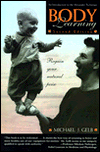 |
|
|
|
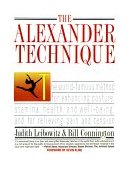 |
|
The Alexander Technique
by Judith Leibowitz and Bill Connington
I’m partial to this book because it led me to Alexander Technique and to bodywork. I picked it up off the “new books” shelf at the library and decided I wanted to try it. Books on Alexander Technique are not meant as self-study guides. The work needs to be learned with a teacher. This book describes the theory behind the work and answers many questions.
[back to top]
|
|
|
|
Freedom to Change
by Frank Pierce Jones
This is the best book I’ve read so far on Alexander Technique. Frank Pierce Jones was an American student of both A.R. and F.M. Alexander in the 1940’s. He wanted to understand the mechanism that accounts for the changes brought about by Alexander Technique lessons. Although not a scientist (he was originally a Classics professor at Brown University), he organized, funded, and performed experiments to demonstrate the mechanism.
What really impressed me was the earlier work of a German scientist, Rudolph Magnus. His experiments demonstrated the importance of the head-neck reflex in physically orienting to the environment. I experienced a major increase in my day-to-day awareness of the directions (“Let the neck free, to allow the head to go forward and up.”) after reading this book.
Freedom to Change was originally published as Body Awareness in Action: A Study of the Alexander Technique and was not available online, as it is now. It was, however, available from Mornum Time Press, a publisher that performs a valuable service by making Alexander Technique books available.
[back to top]
|
|
 |
|
|
|
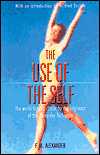 |
|
The Use of the Self
by F.M. Alexander
This is the best place to read about Alexander’s discovery of his method. The first chapter chronicles the problems Alexander experienced with the loss of his voice (he was a professional Shakespearean orator). He discovered his technique through careful observations of himself in the mirror. In the process of correcting his voice problem, he realized he had discovered something that had far-reaching implications. He devoted the rest of his life to communicating his work to others.
There are two case studies — one of a golfer, the other of a stutterer — that stress the importance of inhibition in Alexander Technique. Inhibition occurs in the moment before the body responds to a thought, such as “I’m going to stand up now.” Alexander believed that in this moment, we must be free to choose what comes next. Otherwise we’ll be unable to resist the patterns of misuse the body has learned during its lifetime.
[back to top]
|
|
|
|
The Feldenkrais Method of Somatic Education
Feldenkrais is a relatively well-known movement therapy practice. Dr. Moshe Feldenkrais, a Russian born physicist, developed the work. It’s based on principles of physics and biomechanics, as well as on an understanding of learning and human development.
Lessons usually consist of slowly performing small movements. The idea is to expand awareness of your potential for moving, rather than be limited by the habitual patterns you’ve developed. It’s especially beneficial for anyone with chronic or acute pain in the back, neck, shoulder, hip, legs or knee.
Richard A. Urrutia is a well-known teacher in the San Jose area. He teaches at various adult education centers. If you are over 55, you can take a free Feldenkrais class through the East Side Unified School District Life Long Learning Center. Classes are offered in South San Jose at the Evergreen Community Center (4860 San Felipe Road) on Wednesdays at 10:00 AM and at the Southside Community Center (5585 Cottle Road) on Thursdays at 4:00.
Richard Urrutia’s phone number is 408-293-2241, or you can send email.
[back to top]
|
|
|
|
 |
 |
 |
































